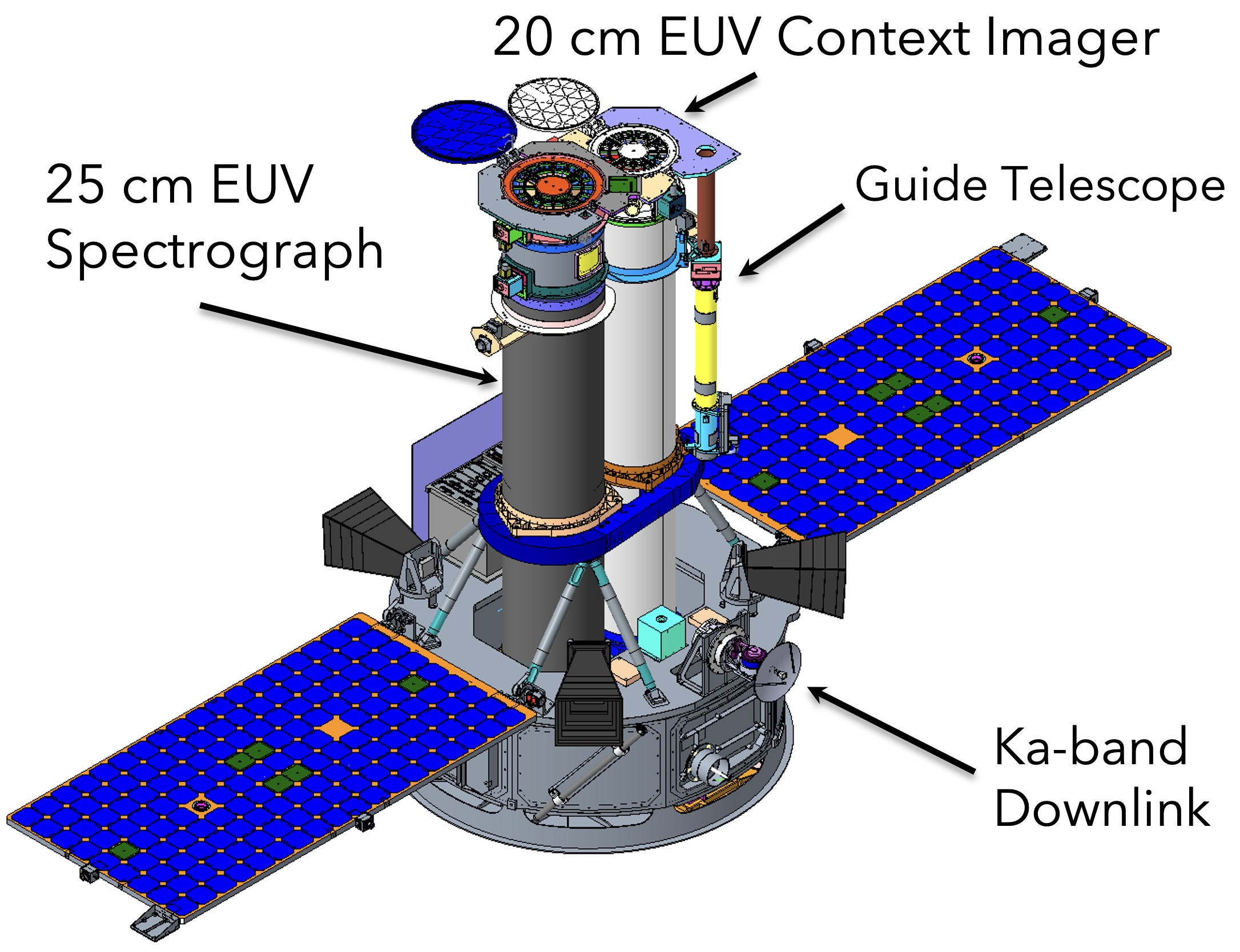Spacecraft
The MUSE spacecraft is based on NASA’s Interface Region Imaging Spectrograph (IRIS) mission (see figure). The spacecraft has no fuel/propellant onboard and carries an S-band transponder and a Ka-band transmitter for commanding and telemetry downlink. It provides a stable platform for high-resolution observations, as exemplified by IRIS which has been routinely obtaining images and spectra with 0.33 arcsec resolution since launch in 2013. Inputs from the star trackers and guide telescope are used by the attitude control system (ACS) for fine Sun pointing, which reuses the IRIS flight software. Selected hardware redundancy is implemented, including the star tracker and magnetometer electronics, reaction wheels, solar cells, and other electronics.
MUSE will be in a 640 km (or higher) Sun-synchronous orbit, giving it a 7-month season of uninterrupted observing each year. Data is downlinked through the Ka-band transmitter nine times/day to the Svalbard Ground Station in Norway and two times/day to NEN stations. The average datarate that is downlinked during an observing day is 20 Mbit/s, for a daily data volume of 170 Gbytes/day.
The MUSE launch is planned for no earlier than 2027 with a 2-year prime mission.

